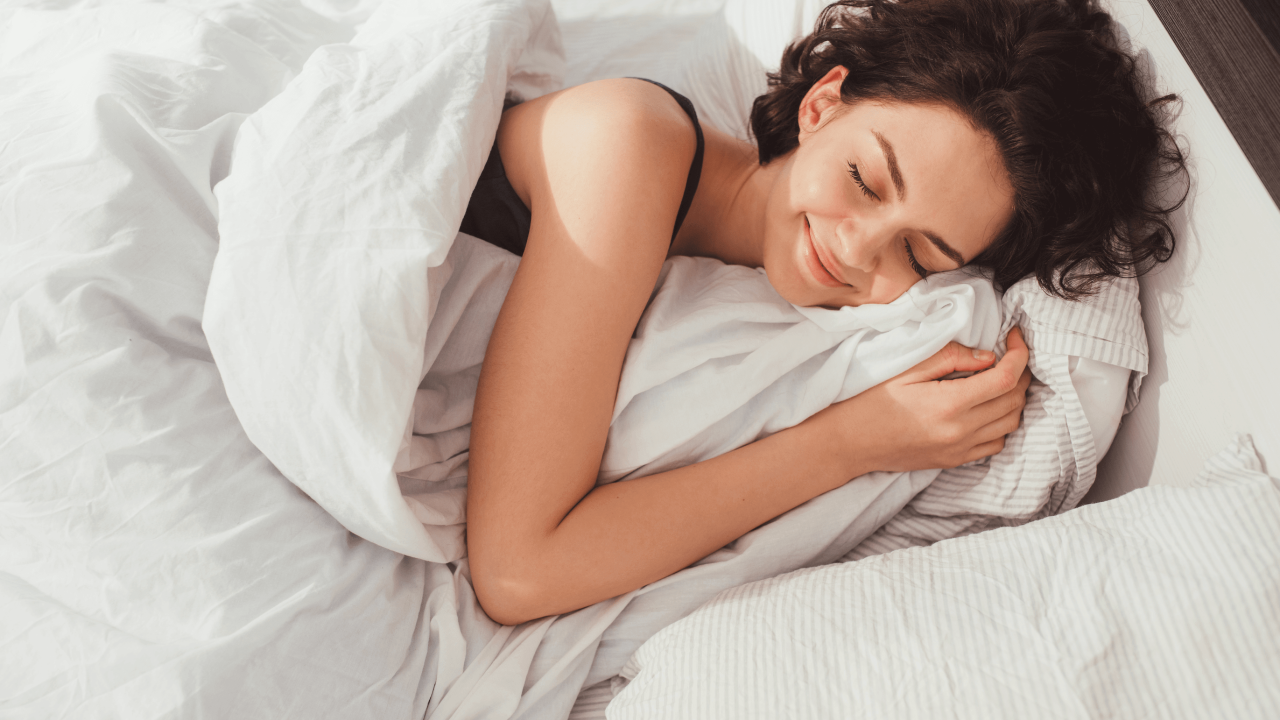
Night-time routines can vary a lot. Some people have a multi-step skincare routine and high-thread-count sheets. Others just splash a little water on their face and hop under the blanket.
Whatever your personal practice, the products you use at night could be putting your health at risk by exposing you to harmful chemicals. It’s important not only to consider the quality of your sleep but also your total sleep environment – the bedtime products you use and what you sleep in and on.
Nighttime routine
The perfect wind-down routine sets you up for a great night’s sleep. Whether it’s 10 steps or two, the products you use can contain harmful chemicals. So check their ingredient labels before you slather on that rich moisturizer or face mask.
Some moisturizers, eye creams and serums contain PFAS, also known as “forever chemicals.” They don’t break down in the environment, and they build up in our bodies. Scientists have linked PFAS to cancer, reproductive harm and immune system damage.
Parabens are another group of chemicals used in moisturizers, cleansers and anti-aging products for their antimicrobial and preservative properties. They are endocrine disruptors that can cause reproductive disorders, affect birth outcomes and increase the risk of cancer.
California is leading the way in making personal care products safer. In 2020, the state passed the Toxic Free Cosmetics Act, which banned 13 PFAS, as well as a number of phthalates and parabens, from personal care products. This year, California Assemblymember Laura Friedman (D-Glendale) introduced Assembly Bill 496, which would ban the sale of cosmetic products containing 26 other chemicals known to be harmful to human health.
Cleaning your sheets and PJs
Fresh sheets and a clean set of pajamas can make the experience of getting into bed luxurious. But how you wash them could envelop you in additional unseen chemicals while you sleep.
Laundry products, especially fabric softeners and heat-activated dryer sheets, can contain chemicals that are harmful to your health and can pollute the air around you and the environment.
Quaternary ammonium compounds, or quats, are used in fabric softeners, disinfectants and sanitizers. They help make clothes feel soft after washing, but they are also known to trigger asthma and skin irritation and may harm the reproductive system.
Scented laundry products can make your sheets smell fresh, but it’s usually with a mix of fragrance chemicals. Ingredient labels often list “fragrance” but not the exact chemicals that make up that particular scent. The term can hide thousands of fragrance chemicals in common household products.
Research shows exposure to some fragrances can be harmful, leading to mild to severe health harm. Health problems include breathing difficulty, allergies, migraine headaches, skin rashes and asthma attacks.
Laundry cleaners can also contain PFAS. If enacted, a new California bill, Assembly Bill 727, would ban PFAS from household, industrial and institutional cleaners. Assemblymember Dr. Akilah Weber (D-La Mesa-San Diego) authored the bill, which has cleared the Assembly and is now being debated in the Senate.
What you sleep on
Mattresses can contain many potentially harmful chemicals and materials. Since we spend about a third of our lives sleeping, make sure that when you curate your comfy nest, you avoid the hazardous substances that could be lurking in your mattress.
Fiberglass began to be used in mattresses as a replacement for toxic flame retardant chemicals after California changed its flammability standards. Yet fiberglass poses additional health issues, as its fragments can escape into the air to create an inhalation hazard and potentially damage the lungs. They can also irritate the skin and eyes.
Certification standards may advertise mattresses as free of harmful ingredients like heavy metals, phthalates and certain flame retardants. But fiberglass is often included in a mattress cover or fire sock and isn’t listed as an additive.
California is taking a step toward safer mattresses with Assembly Bill 1049, which would ban the sale of fiberglass-containing mattresses and upholstered furniture. Assemblymember Friedman authored the bill, which has cleared the Assembly and is making its way through the Senate.
Before choosing a new mattress or crib mattress, find out whether it contains fiberglass. EWG recommends buying from a company that’s transparent about how its product meets fireproofing requirements and the materials it uses.
EWG’s Healthy Living Home Guide contains more guidance on buying a healthy mattress.
Healthy sleeping tips
- Find products for your evening routine in EWG’s Skin Deep® database, which rates more than 90,000 personal care products based on potential hazards and health concerns from their ingredients.
- Buy unscented products to help reduce your exposure to fragrance chemicals, especially if you’re particularly sensitive.
- Look for laundry products in EWG’s Guide to Healthy Cleaning to easily see what’s in your cleaning product and whether the ingredients may cause harm.
- Look for EWG VERIFIED® household cleaning and personal care products – they meet our strictest standards for your health and are free from EWG’s chemicals of concern.
- Download EWG’s Healthy Living App to find out more about these products on the go.
- Look for a mattress bearing the EWG VERIFIED® mark, which is based on standards and criteria developed by our scientists and are based on the latest research.
- Choose a mattress without chemical flame retardants and check with the manufacturer to make sure it doesn’t contain fiberglass.




